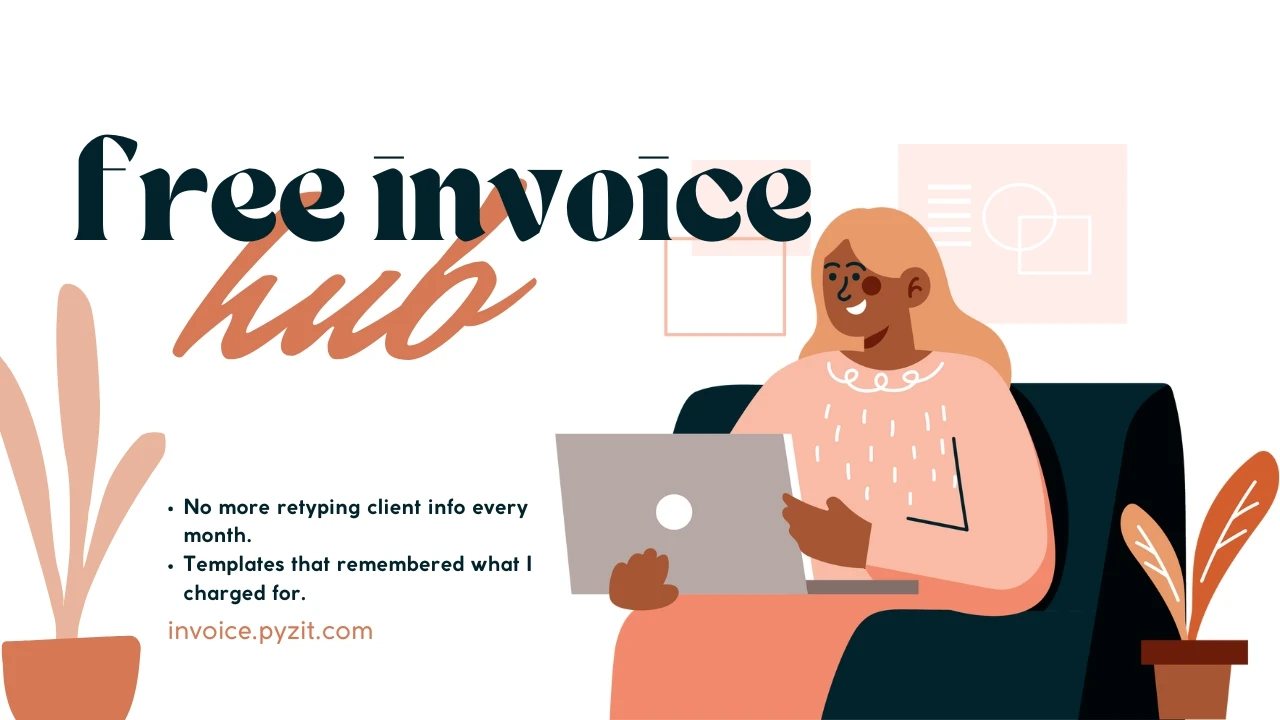
How I Use Online Invoicing to Save Time as a Freelancer (and You Can Too)
If you’ve ever spent more time wrestling with invoices than doing the actual paid work, you’re not alone. I remember the early days: creating invoices in Word, double-checking math manually, sending follow-ups that felt awkward, and then waiting—sometimes weeks—for clients to pay. It was time-consuming, error-prone, and frankly, annoying.
Then I switched to online invoicing, and it felt like flipping a switch. If you’re freelancing—whether it’s writing, design, consulting, development, or something else—here’s how you can use online invoicing to save time, reduce stress, and get paid faster.
Why online invoicing isn’t just “nice to have”—it’s a time hack
Let’s be honest: you didn’t become a freelancer to spend hours formatting invoices or chasing payments. Online invoicing tools are the unsung helpers that take those repetitive, low-leverage parts of your business off your plate.
Here’s what changed for me when I moved online:
- No more retyping client info every month.
- Templates that remembered what I charged for.
- Automatic math (tax, totals, discounts) that didn’t make me second-guess myself.
- Payment links baked into the invoice so clients could pay same-day instead of needing a manual bank transfer.
- Reminder emails that went out on schedule—without me having to “gently nudge” anyone.
That’s time I could spend on new projects, learning a new skill, or just closing the laptop and not feeling guilty about “admin work.”
Picking the right tool (don’t overthink it)
Not every freelancer needs the same thing. The key is to pick a tool that fits your workflow and then use it consistently. For most people starting out, the difference is less important than actually using something.
What I look for:
- Saved client profiles (so I don’t re-enter their info)
- Invoice templates I can brand (logo, colors, custom notes)
- Integrated payment options (card, PayPal, etc.)
- Automatic reminders and recurring invoices
- Simple reporting (so I can see what’s unpaid, overdue, and what I’ve actually earned)
Setting it up so it “just works”
Here’s the setup which make things frictionless:
- Profile & branding: Upload your logo (even a simple text-based one), add your name/business info, and set default payment terms (e.g., Net 15 or Net 30).
- Client library: Add your regular clients once. Include their preferred payment method if they have one, and any notes (like “always wants a breakdown” or “pays on the 10th of each month”).
- Saved services: If you bill the same way often—hourly, per project, fixed deliverable—save those as line items with descriptions. Then invoicing is often just “select service, set quantity/date, hit send.”
- Invoice template: You can customize invoices. It includes:
- Invoice number
- Issue and due dates
- Detailed line items
- Taxes (if applicable)
- Payment instructions/link
- A short thank-you or personal note (“Thanks again for trusting me with your website redesign!”)
Automate as much as possible
The real time savings come from not doing the same thing twice:
- Recurring invoices: For retainer clients or monthly work, set the invoice to auto-send on the schedule you agree on. I have two clients who get invoiced automatically on the 1st of every month—no thinking, no manual send.
- Automatic reminders: Instead of composing “friendly follow-up” emails, the system can send a reminder three days before due, on the due date, and a polite “overdue” notice. You can tweak the language once, and then it does the work.
- Late fees (optional): Some freelancers hesitate, but if you’ve had chronic late payments, adding a small automatic late fee for invoices more than X days overdue can nudge behavior without you having to be the bad cop.
Getting paid faster
This was a game changer: embedding payment links directly in the invoice. Instead of waiting for a client to reply with “how can I pay you?” they click, enter card details or choose PayPal, and it's done.
Pro tip: On bigger projects, I offer a “2% early payment” incentive if they pay within 5 days. It’s small, but a few clients take it, and it smooths cash flow.
Also, make the invoice crystal clear: list accepted payment methods, any required reference they should include, and a “need help? reply to this email” line. Confusion is an excuse to delay, so clarity short-circuits that.
Keep track without spreadsheets
The dashboard in most invoicing apps tells you:
- What’s outstanding
- What’s overdue
- Who’s consistently late
- Monthly income trends
I used to have a separate spreadsheet for this. Now I glance at the dashboard and know if I should be following up or if a month is shaping up well. At tax time, I export everything and hand it over to my accountant, who doesn’t complain about messy data anymore.
Avoid the common pitfalls
- Don’t wait too long to invoice. Send it as soon as deliverables are complete (or on the agreed schedule).
- Don’t chase with emotion. Let the automated system do the first few reminders; when you do follow up personally, keep it short and factual (“Just checking in—invoice #123 was due on July 15. Happy to resend if needed.”)
Always attach your agreement or scope when it’s a big job. If something is in dispute, a clear invoice + written scope makes the conversation easier.
The small human touches that make a difference
Even with automation, a few intentional human elements keep things warm:
- A “thank you” note at the bottom of the invoice (customized for repeat clients).
- Occasional discount or bonus line item for loyalty (“As a thank you, I’ve included a 5% loyalty discount this month.”)
- Quick reply if a client asks about something—don’t make them chase you in the system.
These don’t add much time, but they keep the relationship positive.
Wrap-up: time saved = energy earned
Invoicing doesn’t have to be a monthly headache. Once you set up your online system, you get:
- More consistent cash flow
- Less mental clutter
- More time for billable work and growth
- Fewer awkward follow-ups
If you haven’t tried it yet, spend an hour this week signing up for one tool, porting in a client, and sending your first automated invoice. The next one will take you less than five minutes.
Want a sample invoice template or a quick walkthrough of a specific tool? I can tailor a version for your niche or even help you set up a one-page onboarding/invoice system you can reuse.
M Umair Saleem
SEOShare this Post
Was this blog helpful?
Your feedback is anonymous and no login is required.
Thank You for Your Feedback!
Your feedback helps us improve and serve you better.
You Already Submitted Feedback!
We appreciate your input.
Similar Posts
-
Top Platforms to Practice Coding: Learn and Master Programming Online
-
Email Marketing Automation Tools: A Comprehensive Guide
-
Unlock Your Website's Full Potential with Pyzit: The Ultimate SEO Tool
-
Introducing Invoice.pyzit.com — The Ultimate Free Invoice Generator (No Signup Needed!)
-
Free Developer Tools: Code Editor, DevKit, PyCrypt, OG-META

